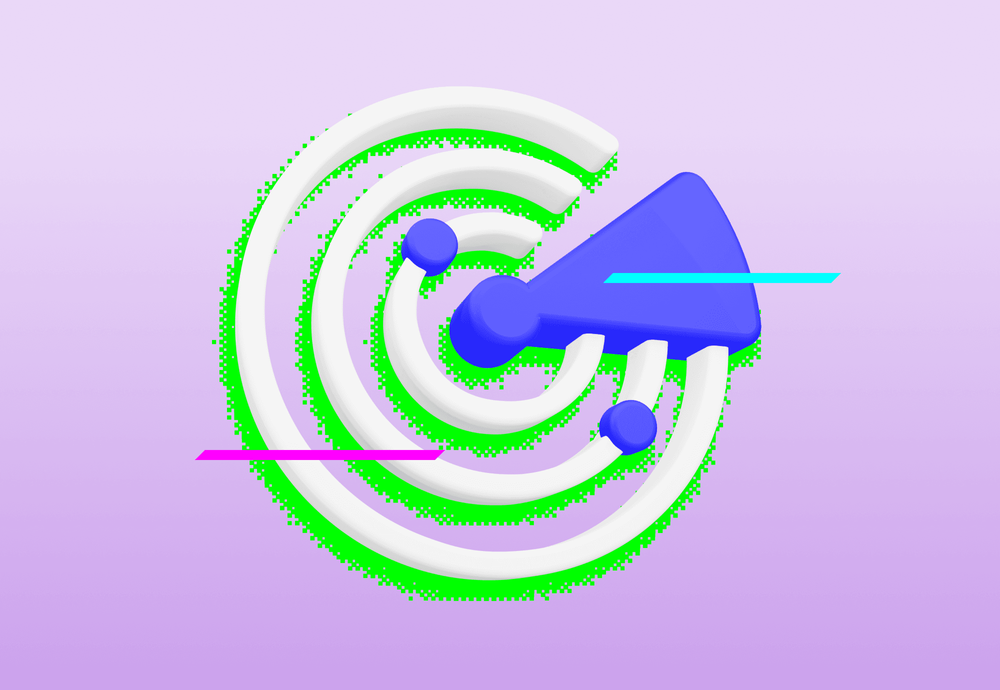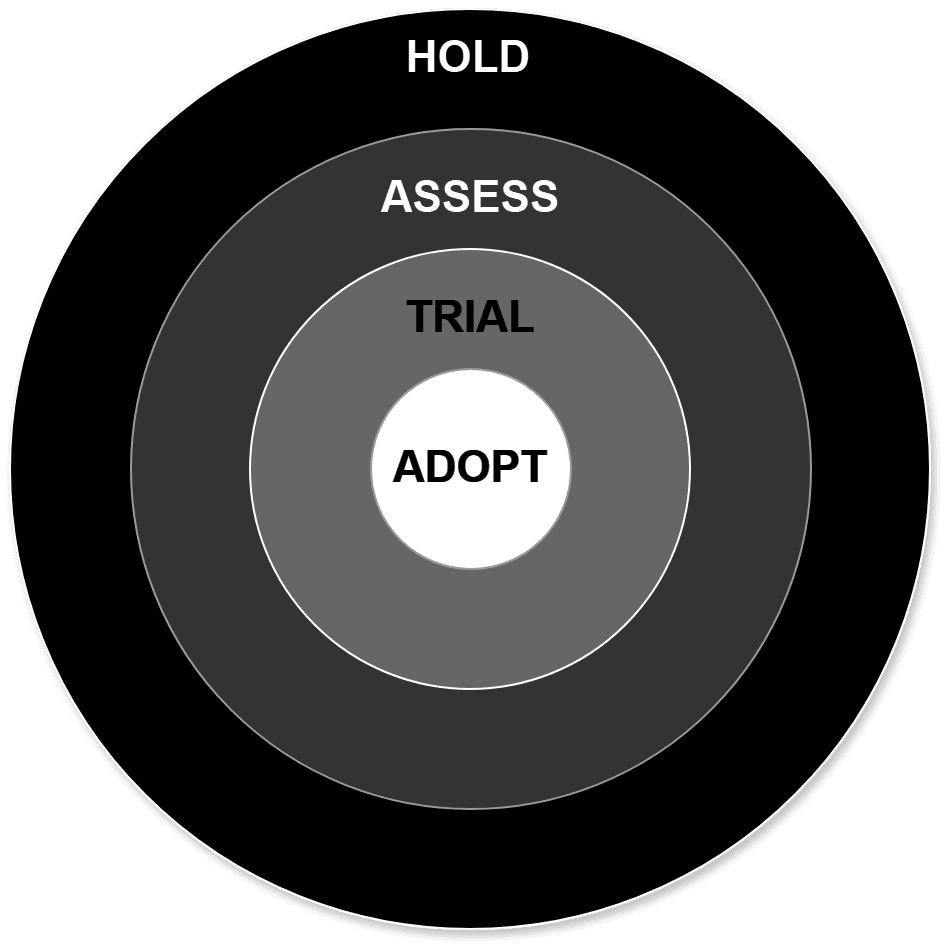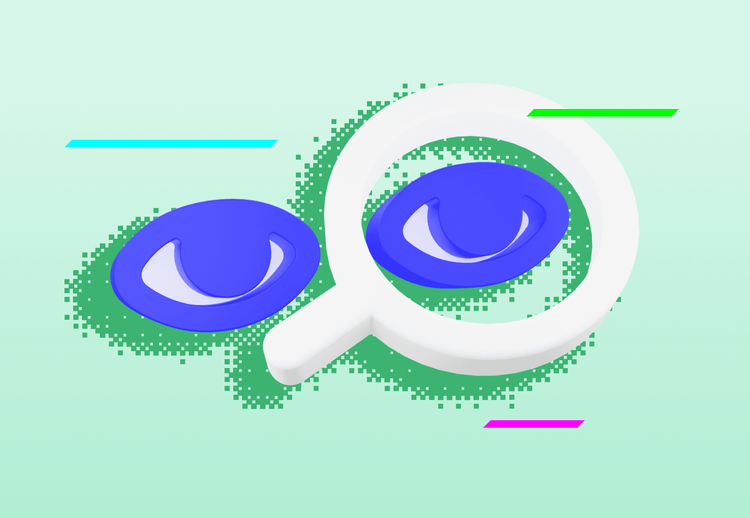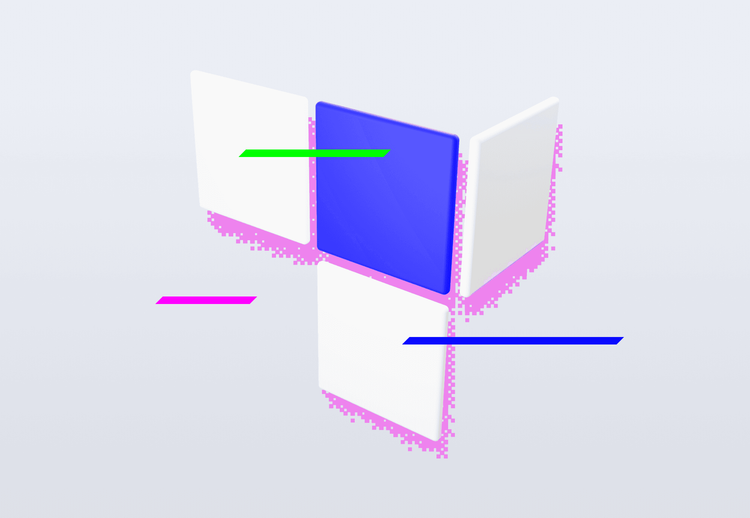Tech Radar: How to Keep Your Tech Stack Organized

Working in app development requires constant learning. Each of us should not only focus on personal growth in the technologies we already know but also explore new ones to continuously refine our solutions or improve development efficiency. Every day, we encounter a variety of tools, often replacing them with others, and sometimes even returning to older ones because they’ve improved over time. If you work in a team, keeping track of which technologies you want to use and why and which you don’t can be quite a challenge. This is where our tech radar has been helping us for the past few years.
What Is a Tech Radar?
A “Tech Radar” is a visual representation that displays various technologies based on their current status and potential for our team. We divide the radar into four sections:
- Hold – Technologies that are currently unsuitable for use due to their issues, obsolescence, or other reasons.
- Assess – Technologies that are candidates for use. The team is aware of them, but they need to be carefully evaluated before adoption.
- Trial – Technologies that have already been selected and adopted by the team but are still being evaluated.
- Adopt – Technologies that are recommended for widespread use.
Simply put, imagine a radar as you normally know it, divided into four quadrants, where the technologies closest to the center are those you utilize and are confident that no better option exists for your team. The further you move from the center, the less tested and reliable the technologies become. At the very edge are the technologies you are certain you do not want to use.

Why We Use a Tech Radar
If the introduction hasn’t convinced you that a tech radar is a tool that can significantly clarify your current team tech stack, rest assured there are more reasons to use it.
In addition to helping new team members understand which technologies and tools you use, it also provides insight into your decision-making process. The radar is not just about visualizing categorized technologies; it’s also about documenting the reasons behind each categorization. This information can be useful not only for newcomers but also for the entire team.
Over time, it’s entirely possible—whether due to the development of the tool itself or market changes—that technologies you once placed in the Hold category may become preferable to the ones you’re currently using. Knowing the reasons why a certain technology was deemed unsuitable in the past can be crucial. Besides, we’re not robots; we use a lot of tools and technologies, and it’s impossible to remember everything.
How to Start Using a Tech Radar Today
Setting up your own tech radar is simple. If you want a quick and hassle-free solution like ours, you can use a radar based on Google Sheets from thoughtworks. By creating a Google Sheets table and linking it to your new radar, you can easily visualize and edit your technologies. To see how this might look, check out our Ackee Tech Radar.
If you prefer a more polished solution, there is an open source radar from Zalando, který si můžete sami nasadit, kam budete chtít, a upravit dle vlastních potřeb. that you can deploy wherever you want and customize to your needs. You can see an example of what such a radar looks like on Zalando’s own tech radar.
Other interesting radars can be found here:





